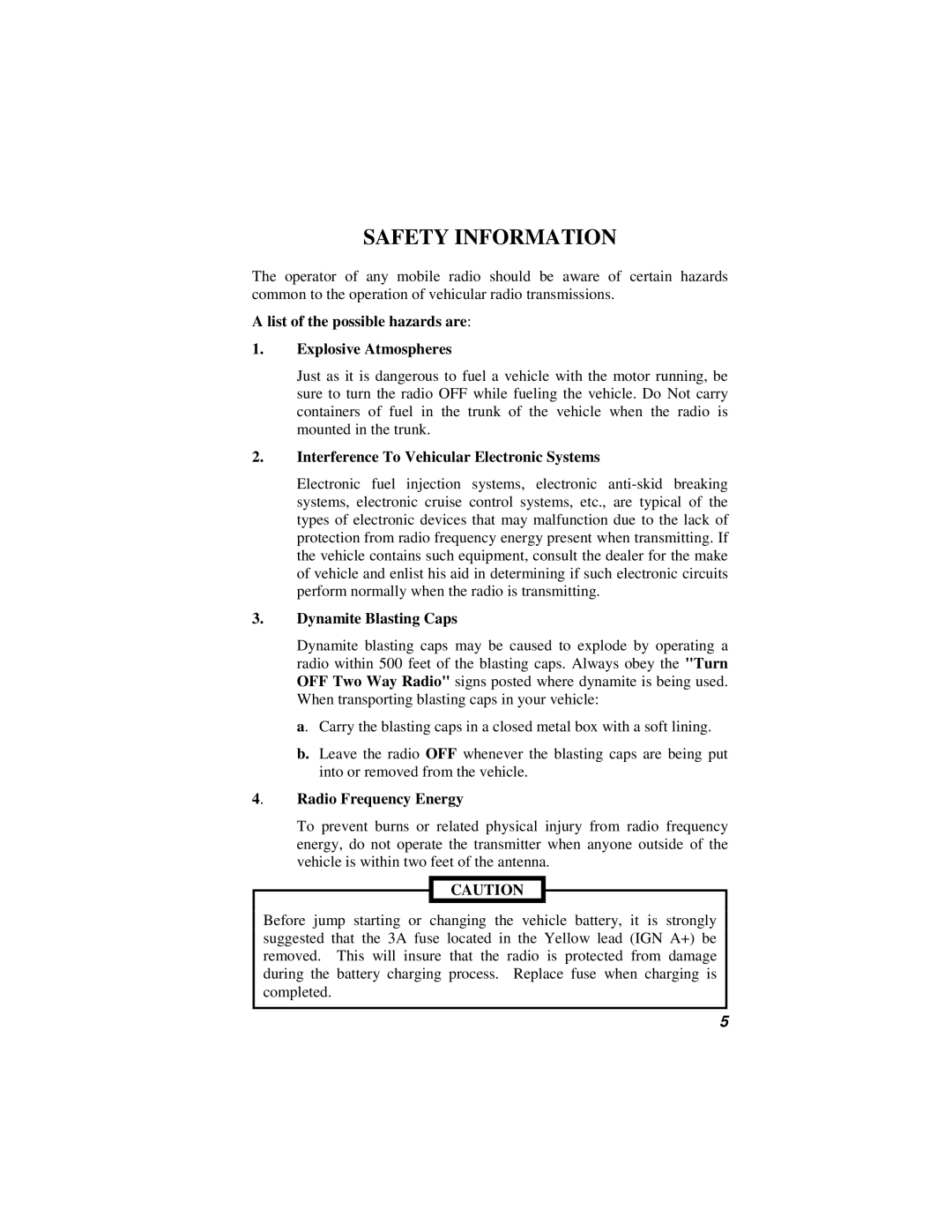
SAFETY INFORMATION
The operator of any mobile radio should be aware of certain hazards common to the operation of vehicular radio transmissions.
A list of the possible hazards are:
1.Explosive Atmospheres
Just as it is dangerous to fuel a vehicle with the motor running, be sure to turn the radio OFF while fueling the vehicle. Do Not carry containers of fuel in the trunk of the vehicle when the radio is mounted in the trunk.
2.Interference To Vehicular Electronic Systems
Electronic fuel injection systems, electronic
3.Dynamite Blasting Caps
Dynamite blasting caps may be caused to explode by operating a radio within 500 feet of the blasting caps. Always obey the "Turn OFF Two Way Radio" signs posted where dynamite is being used. When transporting blasting caps in your vehicle:
a. Carry the blasting caps in a closed metal box with a soft lining.
b.Leave the radio OFF whenever the blasting caps are being put into or removed from the vehicle.
4. Radio Frequency Energy
To prevent burns or related physical injury from radio frequency energy, do not operate the transmitter when anyone outside of the vehicle is within two feet of the antenna.
CAUTION
Before jump starting or changing the vehicle battery, it is strongly suggested that the 3A fuse located in the Yellow lead (IGN A+) be removed. This will insure that the radio is protected from damage during the battery charging process. Replace fuse when charging is completed.
5
